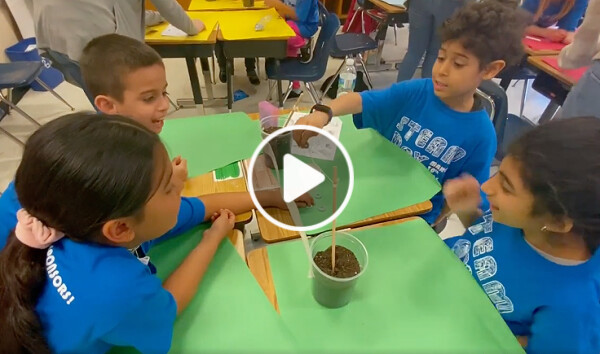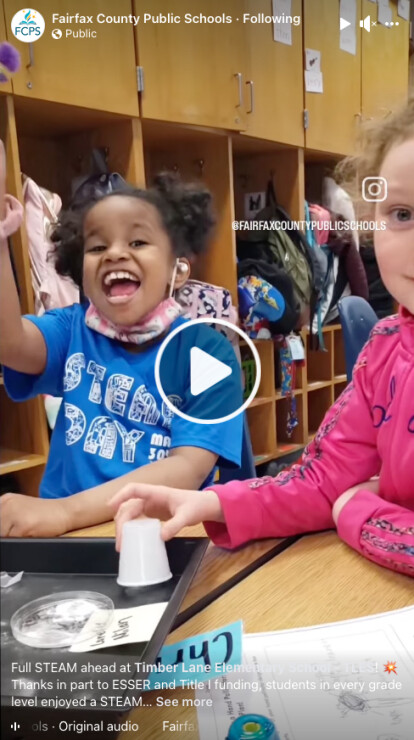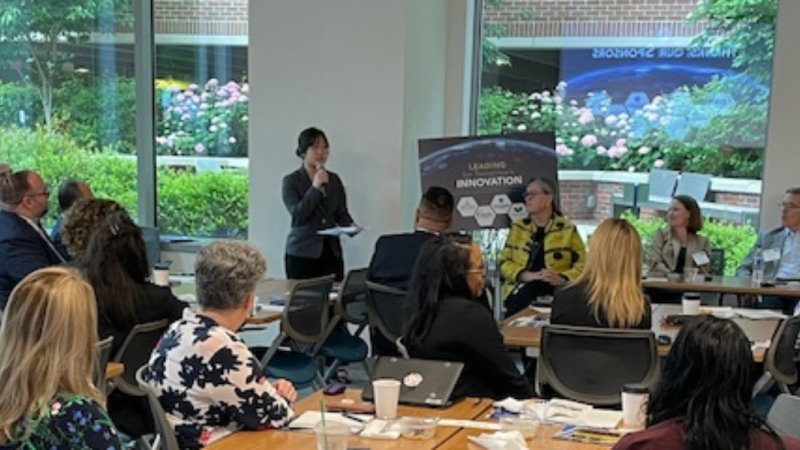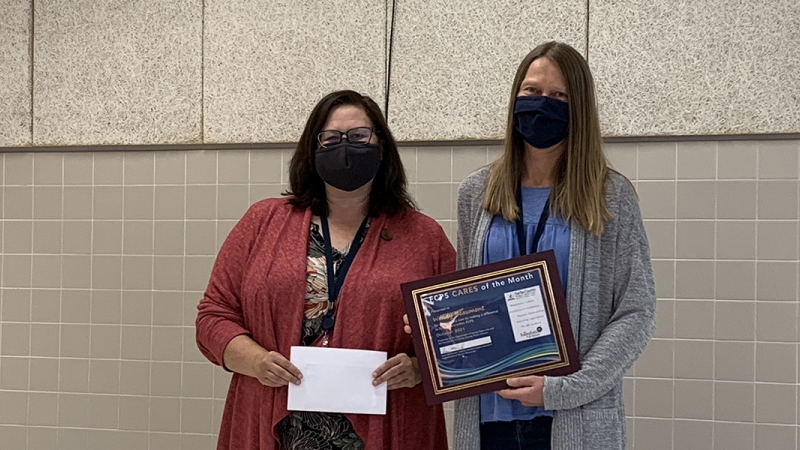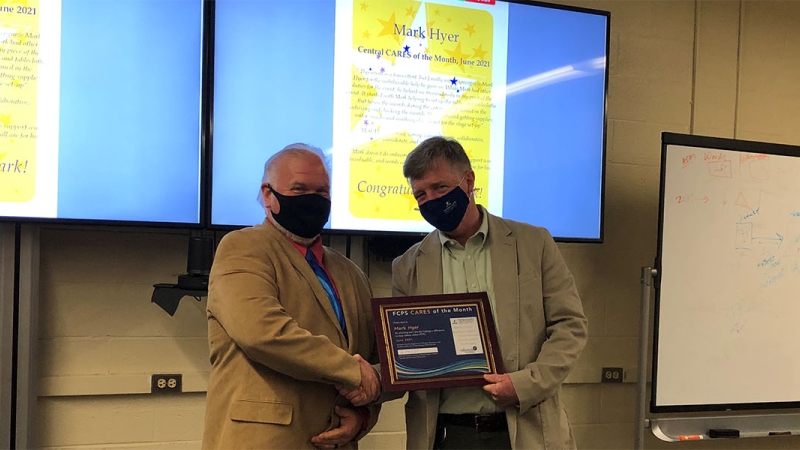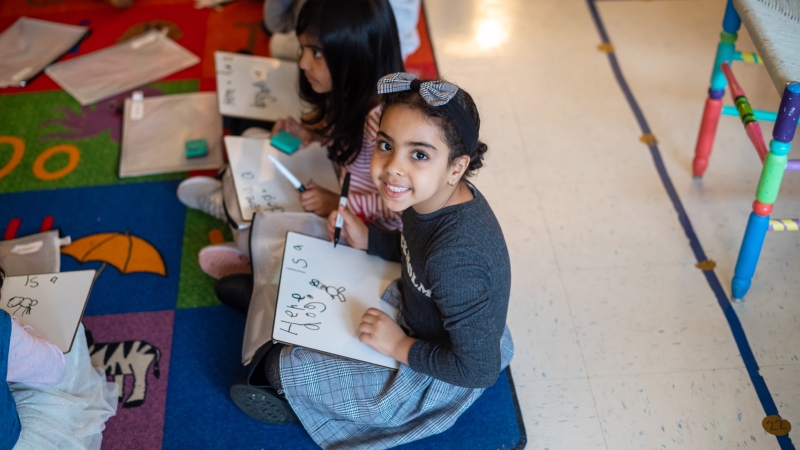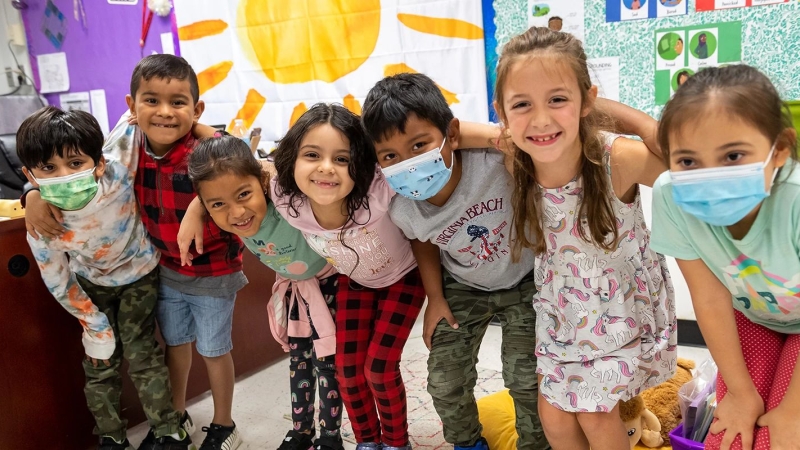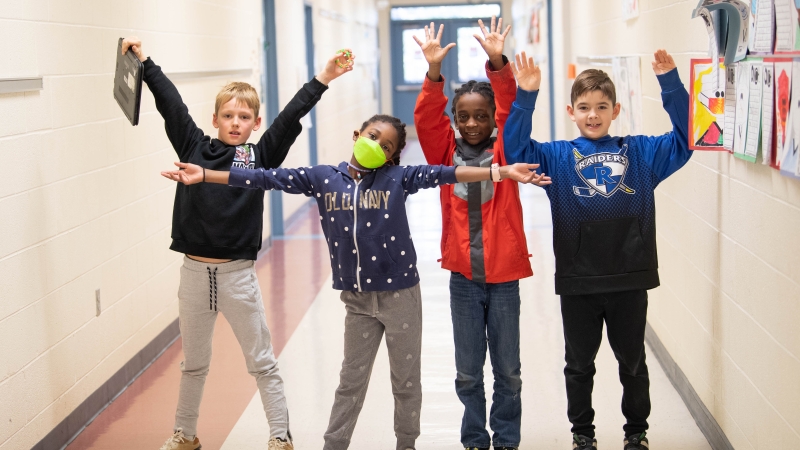
Full STEAM Ahead with ESSER Funding
"Who are these engineers? Do you recognize them?" Timber Lane Elementary School Kindergarten Teacher Kelly Jonovich asks her students as she points to photos projected on the screen in the front of the classroom.
"I see myself!" one student chimes in. "That's me!" another adds.
"What problem do you think Layla is solving here? How is she an engineer?” Jonovich points to the photos of her students from a previous day, engaged in various activities. At the top of the screen is a definition: “Engineers: People who solve a problem.”
“Layla was seeing how fast she could make a rock go down that slide,” she explains.
Across the school building in 6th grade, a classroom hushes momentarily as a small wind glider made from paper, straws, and wooden craft sticks slides along two fishing lines, powered by wind from a fan. The silence turns into cheers and “Oohs!” as the glider makes it past the 6-foot mark and all the way to the end of the line.
Another classroom tries the same activity, but with aluminum foil sails. One of them doesn’t make it the full distance. “What do you think you need to do to fix it?” the teacher asks.
Schoolwide, 635 Timber Lane students in pre-K through 6th grade are engaged in similar hands-on activities on this special STEAM Day, made possible in part by Elementary and Secondary School Emergency Relief aid, or ESSER III funding – money given to states by the federal government to help address any pandemic-related issues that may be impacting students. STEAM stands for Science, Technology, Engineering, Art and Math.
The goal of this special day is to expose students to the engineering design process, using their critical thinking and problem solving skills while collaborating and communicating in their teams—all FCPS Portrait of a Graduate skills needed to be successful in school and in life.
“We want students to know that anyone can engage in the engineering process,” explains Timber Lane Math and STEAM Coach Louise Nelson. “If we expose them to engineering, they can see themselves in this role, as a possible career one day.”
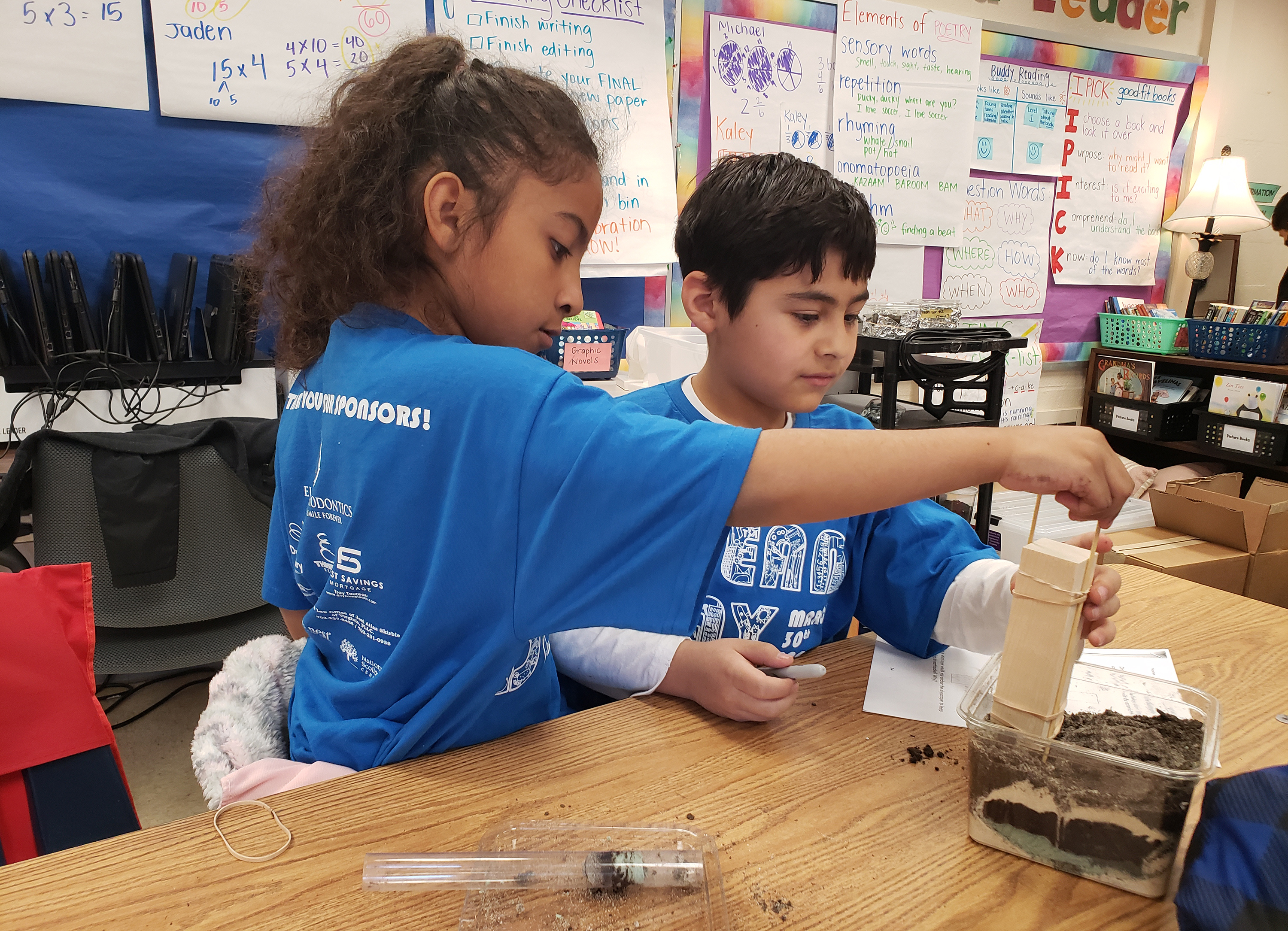
Every activity kicks off with a story that introduces students to the engineering process and vocabulary. “The story identifies a real-world issue and builds context for the upcoming experiment. Having students solve authentic problems helps them embrace the science concepts and elevates their level of thinking,” Nelson adds.
Every classroom is engaged in age-appropriate experiments that tie back to science standards they are learning in their grade level. Kindergarten engineers design tiger shelters to give a tiger enough shade to keep them cool. Older students test soil composite to determine the best location to build skyscrapers on, shaking their model landscapes to mimic an earthquake.
Even in specials such as physical education and music, STEAM is the aim.
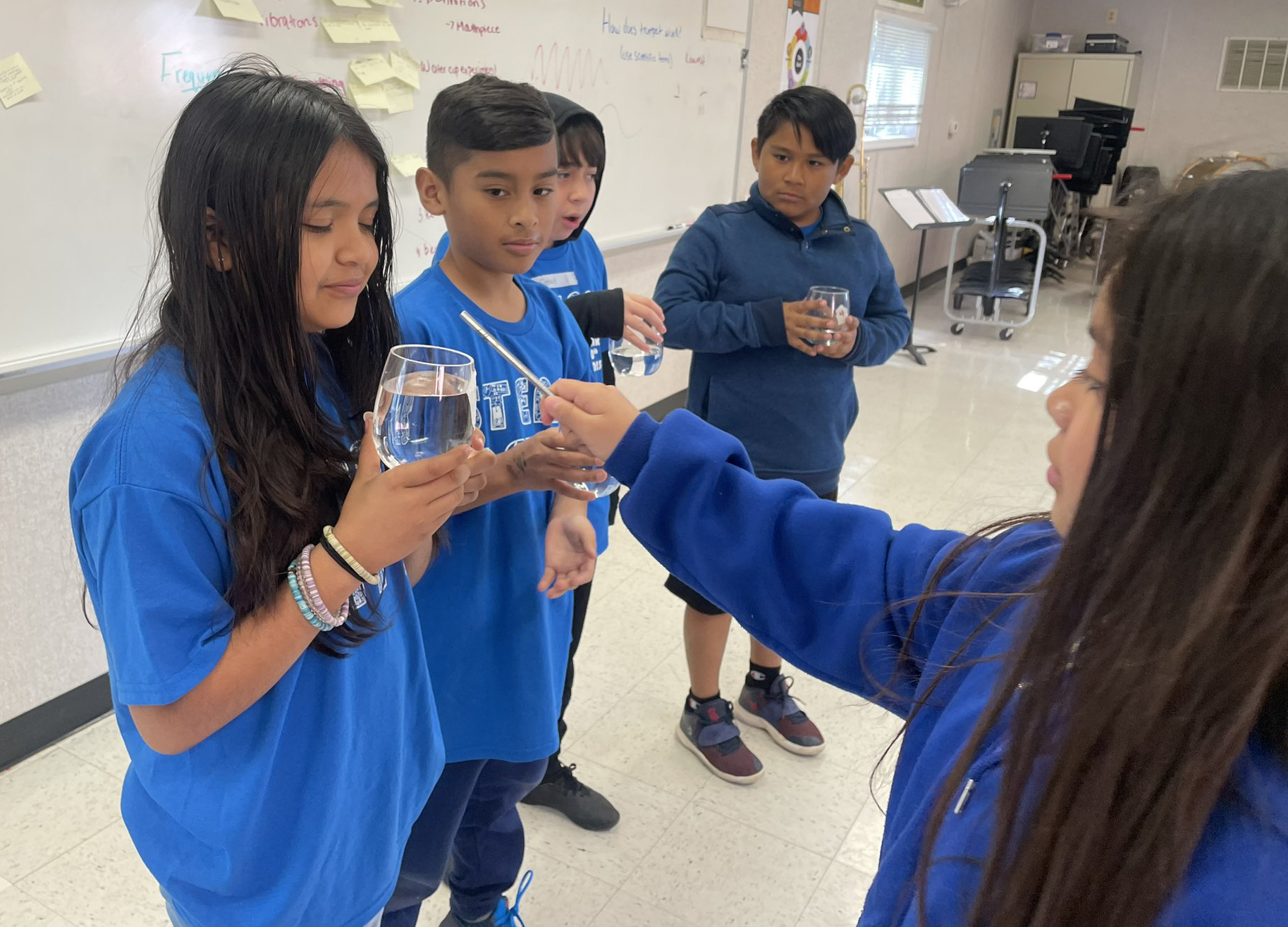
Hypothesizing, testing, failing, and trying again. Then, the sounds of cheers as students find an effective solution. “It works!” one student smiles and fist bumps the air as her hand pollinator successfully transfers faux pollen into a cup.
“The engagement and teamwork were off the charts!” reading teacher Caroline Sauer shares.
“To hear students say, ‘Wow, this is so much fun, this is like Field Day!’ tells us that their learning was really elevated,” adds Nelson.
“If it wasn’t for ESSER funds helping to pay for instructional kits and materials, Title I funding for critical positions such as our STEAM Coach, and incredible amounts of planning, pre-teaching, collaboration and instruction across multiple subject areas leading up to this event by all of our teachers, all of this would not have been possible,” added Principal Benjamin Chiet.
Watch more from Timber Lane ES STEAM Day:
